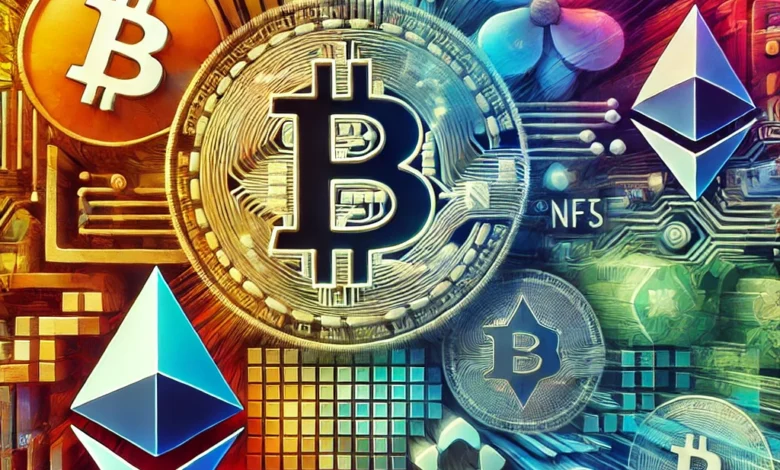Cryptocurrency Exciting Innovations and Trends

The world of cryptocurrency is an ever-evolving landscape, bursting with innovations and opportunities that keep investors, enthusiasts, and technologists on their toes. From the rise of decentralized finance (DeFi) to the surge of non-fungible tokens (NFTs), the cryptocurrency market continues to redefine the boundaries of finance and technology. In this comprehensive article, we delve into the latest exciting trends in cryptocurrency, explore groundbreaking innovations, and examine what the future holds for this dynamic industry.
The Rise of Decentralized Finance (DeFi)
DeFi has been one of the most transformative trends in the cryptocurrency space. Unlike traditional financial systems that rely on intermediaries such as banks and brokers, DeFi leverages blockchain technology to enable peer-to-peer financial transactions. This democratizes access to financial services, making them available to anyone with an internet connection.
Key Innovations in DeFi
- Decentralized Exchanges (DEXs): Platforms like Uniswap and SushiSwap have revolutionized trading by allowing users to trade directly from their wallets without the need for a central authority. These platforms use automated market makers (AMMs) to facilitate liquidity and price discovery.
- Lending and Borrowing Protocols: DeFi platforms such as Aave and Compound allow users to lend their crypto assets and earn interest or borrow against their holdings. These protocols use smart contracts to automate the lending process, ensuring transparency and security.
- Yield Farming and Staking: Yield farming involves providing liquidity to DeFi platforms in exchange for rewards, often in the form of additional tokens. Staking, on the other hand, involves locking up crypto assets to support network operations and earn rewards. Both methods have become popular ways for investors to generate passive income.
The Surge of Non-Fungible Tokens (NFTs)
NFTs have taken the art, gaming, and entertainment industries by storm. Unlike traditional cryptocurrencies, NFTs are unique digital assets that represent ownership of a specific item or piece of content, such as artwork, music, or virtual real estate.
Key Innovations in NFTs
- Digital Art and Collectibles: Artists can tokenize their work and sell it directly to collectors on platforms like OpenSea and Rarible. This has opened up new revenue streams for creators and provided collectors with verifiable ownership and provenance of digital art.
- Gaming and Virtual Worlds: NFTs are being used to represent in-game items, characters, and virtual real estate. Games like Axie Infinity and Decentraland allow players to buy, sell, and trade NFTs, creating vibrant virtual economies.
- Entertainment and Media: Musicians and content creators are leveraging NFTs to sell exclusive content and experiences. For example, Kings of Leon released an album as an NFT, offering fans exclusive perks such as front-row concert tickets and limited-edition vinyl records.
The Institutional Adoption of Cryptocurrency
The growing interest and adoption of cryptocurrency by institutional investors have added a new layer of legitimacy to the market. Major financial institutions, hedge funds, and publicly traded companies are increasingly recognizing the potential of digital assets.
Key Developments in Institutional Adoption
- Bitcoin as a Store of Value: Bitcoin has been dubbed “digital gold” and is being used by institutions as a hedge against inflation and economic uncertainty. Companies like MicroStrategy and Tesla have invested significant portions of their treasury reserves in Bitcoin.
- Cryptocurrency ETFs: Exchange-traded funds (ETFs) that track the performance of cryptocurrencies have gained popularity. The approval of Bitcoin and Ethereum ETFs in various jurisdictions has made it easier for traditional investors to gain exposure to digital assets.
- Partnerships with Financial Institutions: Leading banks and payment processors are integrating cryptocurrency services into their offerings. For example, PayPal and Visa now allow customers to buy, sell, and use cryptocurrencies for payments, bridging the gap between traditional finance and the crypto world.
The Regulatory Landscape
Regulation remains a critical factor shaping the future of cryptocurrency. Governments and regulatory bodies worldwide are grappling with how to balance innovation with consumer protection and financial stability.
Key Regulatory Developments
- United States: The Securities and Exchange Commission (SEC) and other regulatory agencies are increasingly focused on regulating cryptocurrency markets. Recent developments include the approval of Bitcoin futures ETFs and increased scrutiny of stablecoins and DeFi platforms.
- Europe: The European Union is working on the Markets in Crypto-Assets (MiCA) regulation, which aims to create a harmonized regulatory framework for cryptocurrencies across member states. This regulation seeks to provide legal certainty and protect consumers while fostering innovation.
- Asia: Countries like China have taken a stringent approach by banning cryptocurrency mining and trading. Conversely, Japan and South Korea are adopting more balanced regulatory measures to encourage innovation while ensuring investor protection.
The Future of Cryptocurrency
The future of cryptocurrency is both exciting and uncertain. While the market continues to grow and evolve, several trends and developments are worth watching.
Key Trends to Watch
- Interoperability: As the number of blockchain networks grows, interoperability between different chains will become increasingly important. Projects like Polkadot and Cosmos are working on solutions to enable seamless communication and interaction between disparate blockchains.
- Scalability: Scalability remains a significant challenge for blockchain networks. Ethereum’s transition to Ethereum 2.0 and the development of layer 2 solutions like Optimism and Arbitrum aim to improve transaction throughput and reduce fees.
- Central Bank Digital Currencies (CBDCs): Central banks worldwide are exploring the development of digital versions of their currencies. CBDCs could transform the financial landscape by providing a digital alternative to cash and improving the efficiency of payment systems.
- Environmental Sustainability: The environmental impact of cryptocurrency mining, particularly Bitcoin, has been a topic of concern. The industry is increasingly focused on developing sustainable mining practices and exploring alternative consensus mechanisms like proof-of-stake.
The cryptocurrency market is a hotbed of innovation, offering exciting opportunities for investors, technologists, and entrepreneurs. From the rise of DeFi and NFTs to the growing institutional adoption and evolving regulatory landscape, the world of cryptocurrency is rapidly changing. As we look to the future, the continued development of blockchain technology and the emergence of new trends will shape the trajectory of this dynamic industry.
Join the Conversation
Stay ahead in the world of cryptocurrency by joining our Telegram group. Get the latest updates, share insights, and discuss trends with the BitsLeak community.




